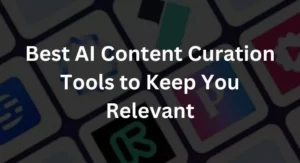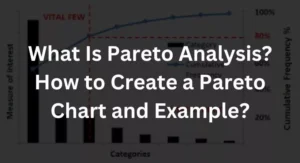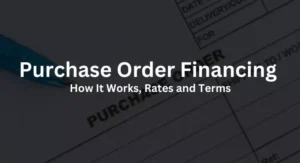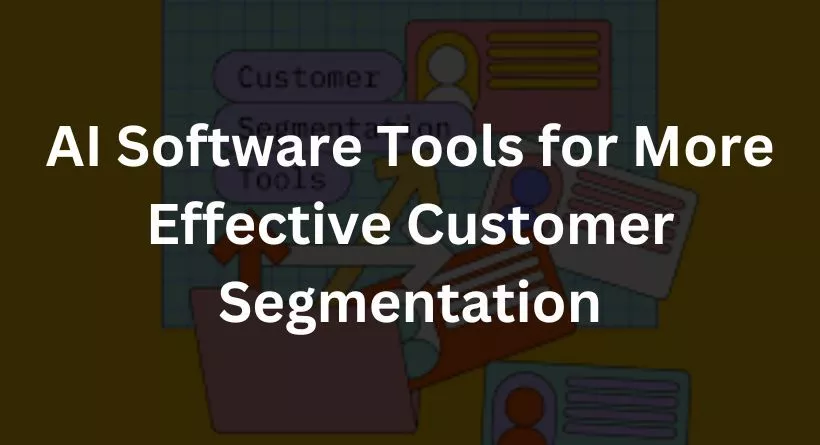
Understanding and offering content that is pertinent to your target demographic is essential for personalizing marketing communications and experiences. While some companies target a single consumer type, brands that serve many types of consumers need to divide their clientele in order to provide the best possible experiences for everyone. Email marketing that use segmentation really have an open rate that is 14.31% greater than those that do not.
Through customer segmentation, customers are grouped based on common characteristics like age, geography, and whether or not they have used your service or purchased one of your goods. You need a method to identify these clusters and the ways in which each one engages with your enterprise.
To put it briefly, the data that you think would be most helpful for your marketing initiatives is where the segmentation process begins. It also includes tools that use these common behaviors and features to assess and organize clients.
AI-powered solutions provide the information and insights required to assist you in creating distinctive messaging and value propositions that will broadly appeal to the requirements, wants, and preferences of your market.
4 Challenges in Customer Segmentation
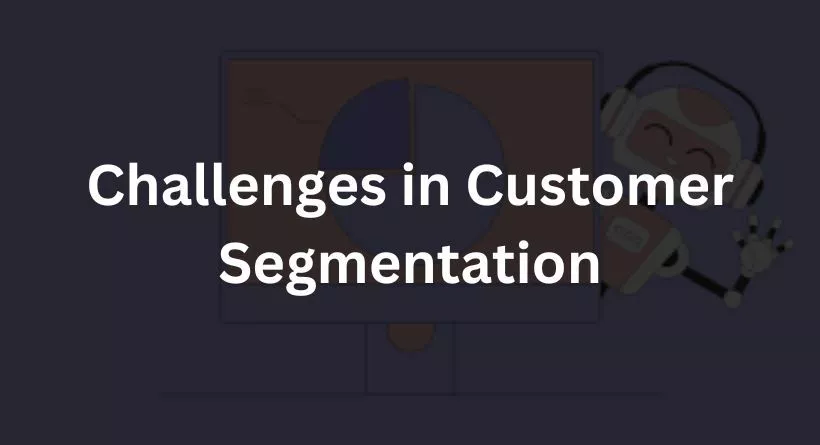
These 4 issues can make customer segmentation difficult without the help of software:
1. Quality of data
Only when your database is filled with correct data can you correctly segment your consumer base. To find redundant, outdated (outdated records), unclear (from incorrect spelling, tagging/categorization techniques, or deceptive column titles), or concealed data (saved data not shared by other departments), tools are required.
2. Size of data
To understand the behavior and motives of your clients, you need to collect adequate data. They may originate from a variety of sources, including analytics, feedback forms, and surveys. Without AI capabilities, it is challenging to gather and arrange data from all of your content distribution channels. However, utilizing this technology can open up new avenues for you, including connecting with previously untapped markets, and you can then modify your marketing strategies appropriately.
3. Breadth of segments
Excessive narrow or wide segmentation may result in inaccurate data insights and inadequate marketing campaign targeting. Reaching out to groups with verified purchasing power is made possible by effective segmentation, and AI technologies facilitate this process by offering pre-established and adaptable categories or segments.
4. Time drain
It takes time to analyze data and create client profiles. Additionally, you must set out time to determine the channels that will enable you to communicate with your segments. Artificial intelligence segmentation tools automate these procedures and provide nearly instantaneous results.
You may also like raeding: Best AI Tools for Journalists to Help You Write Faster and Better
Best AI Segmentation Platforms
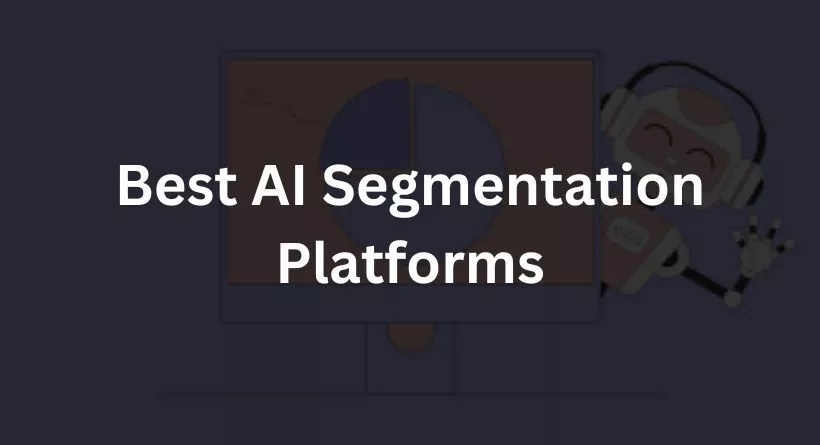
1. Peak.ai
Headless segmentation, used by Peak.ai, is independent of a single source. Gaining access to data from as many data touchpoints as you can help you create a more comprehensive customer profile that includes details about your customers’ purchasing patterns and churn risk. Furthermore, you can forecast which product your consumers will purchase next or when they’re most likely to read their next email by combining this previous data with AI.
Large volumes of data are ingested and consolidated by the platform into a single source of customer truth. Next, it examines key metrics in each segment and divides the client data into segment maps based on predictive and non-predictive properties. More than 35 AI-driven criteria are available for selection, ranging from lifetime value and purchase to tendency to churn.
You may connect these data segments to your customer-facing platforms, CRMs, social media accounts, and customer data platforms (CDPs) using Peak.ai. 20% of the platform’s apps may be customized to fit your company’s procedures and regulations, while the remaining 80% are pre-built.
2. Optimove
With the help of data integration from four sources, Optimove is a cross-channel platform for managing campaigns and customer development that gives users personalized predictive customer models. These sources include campaign response histories, in-app or on-site user behavior, third-party data, and first-party raw data.
Optimove uses mathematical models or customer clustering analysis to identify groups of related consumers who are as homogeneous—that is, with the least amount of diversity among customers—as feasible in each group. The software divides users into daily-refreshing micro-segments based on demographics, behavior patterns, and real-time activities. Additionally, without utilizing micro-segmentation, marketers may tailor segments for analysis or campaign marketing utilizing any field. The integrated marketing optimization bot from Optimove, called Optibot, goes through data for one or more segments to find patterns and useful information. Additionally, the technology tracks users as they transition between different micro-segments, enabling more thorough segmentation. This change takes into account a customer’s habits over the course of their lifetime.
3. Glance
Glance bills itself as the “autopilot” platform for segmentation and contextual content production that go-to-market teams (marketing, sales, and customer success) may utilize. Its AI Graph technology “hypersegments” your contacts based on readiness and intent using cross-channel indications, allowing you to concentrate solely on qualified prospects. The stage at which your target audience is in the user journey is known as intent. In the meanwhile, there are several ways to be prepared: to pay, churn, or upgrade. These variables are used by Glance to identify potential customers, clients for upselling, and clients that pose a churn risk. Every week, the platform creates hypersegments, which you may export automatically to your marketing platform or transfer manually as needed. At the hypersegment level, content recommendations like as length, tone, and subject line keywords are also displayed.
With interfaces with Mailchimp, Hubspot, Salesforce, ActiveCampaign, Amplitude, and Stripe, Glance is a great solution for focused B2B email marketing campaigns. The platform may also be linked to web analytics, billing, product analytics, and customer relationship management data. If you have a campaign history of at least three months and 2,500 contacts, this platform is for you.
4. Visual Website Optimizer (VWO)
VWO is essentially a point-and-click split-testing tool that helps you improve your website by letting you gauge the effectiveness of different trials across different segments. You may export these categories into your client engagement and CRM applications thanks to its connectors.
VWO When it comes to organizing experiments, your team may access comprehensive individual profiles of each client that Data360 gathers from several touchpoints in one location. A variety of datasets, including visitor attributes (language, location, pages per session, device, operating system, and more) obtained from your customer’s browser, visitor events (activities on your website), behavioral data (heatmaps and survey responses using VWO Insights), and experimentation data (response to A/B tests) obtained from VWO Testing, can be used by Data360 to segment your customer information.
Concurrently, VWO Personalize logs the actions of your website visitors—from their initial visit to their initial purchase—assisting you in developing highly personalized experiences that enhance user retention.
5. Clearbit
Clearbit is a data enrichment tool that is suggested for business-to-business (B2B) marketing since it enables you to segment accounts based on more than 100 variables, including individual and corporate clients. These consist of the number of employees, the location, the phone number, the income, the installed technologies, and more. With the use of these data pieces, marketers may create segments that correspond to their ideal customer profile (ICP) for focused interaction. Additionally, customers may be informed when these “best-fit” firms demonstrate intent by visiting your price page or reading product evaluations by using Clearbit’s internet provider intelligence, Reveal.
This machine learning-driven technology gathers, sorts, and verifies first- and third-party data from both public and private data sources. Then, Clearbit uses validated data to instantly update or create new corporate records and fix any that are out-of-date or lacking. To locate new ideal clients, you can also search via the platform’s 350 million contacts and 44 million enterprises dataset.
Conclusion
Effective customer segmentation is the key to personalized marketing success. The challenges associated with segmentation can be overcome with the aid of advanced AI tools like Peak.ai, Optimove, Glance, VWO, and Clearbit. These tools empower businesses to streamline their processes, save time, and deliver tailored experiences that resonate with their diverse customer base.
FAQs
What is customer segmentation?
Customer segmentation is the practice of dividing a customer base into groups with similar characteristics to tailor marketing strategies and offerings.
Why is AI crucial for customer segmentation?
AI automates the segmentation process, making it faster and more accurate by analyzing vast amounts of data.
How does email marketing benefit from customer segmentation?
Segmented email campaigns have a higher open rate, indicating that targeted communication appeals more to specific customer groups.
Can these AI tools be customized for specific business needs?
Yes, most AI segmentation platforms, like Peak.ai, offer customization options to align with unique business processes.
How does Glance’s AI Graph technology enhance segmentation?
Glance’s AI Graph technology hyper segments contacts based on readiness and intent, allowing businesses to focus on qualified prospects efficiently.

